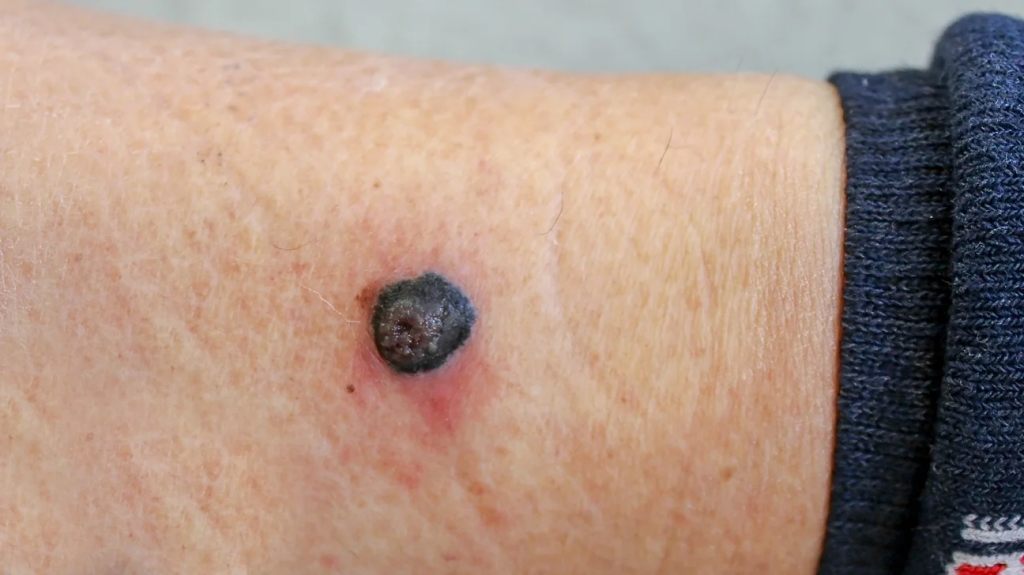Melanoma and the Other Side
Dr. Cancer” is a trusted skin surgeon referred by many doctors. He is known for his expertise in skin cancer removal. He holds a degree and lectures nationally on melanoma treatment. All patients referred to him must bring a biopsy report. Some also include photos of the biopsy site. Most patients are fairly aware of where the biopsy was performed. Two years ago, a cancer patient was diagnosed with non-invasive melanoma on his right cheek through biopsy. Patients brought a photo of the affected area to their first visit. Since the patient was very afraid of the upcoming surgery, Dr. Gunn suggested that he take anti-anxiety medication before the surgery. The consent form was signed during the medical appointment.
On the day of surgery, Dr. Cancer patient takes double the amount of anti-anxiety medication. When she left the doctor, she was sleepy and confused. She has cancer. Unfortunately, it was not a good day for the Doctor. cancer. Staff administered local anesthesia in the wrong location. Dr. The cancer was then removed from a large portion of the wrong area of the skin, but the melanoma was not. As staff began teaching patients proper wound care, the patient’s family realized that the surgery was being performed in the wrong location. they felt scared. They never returned to the clinic and filed both a malpractice suit and a complaint against the doctor. Cancer number 1. What now?
Unfortunately, misplaced operations occur frequently. More than 20 years ago, a world-renowned New York neurosurgeon had his medical license temporarily revoked for operating on the wrong side of a patient’s brain. A Rhode Island hospital has been penalized for authorizing five surgeries on the wrong areas over the past three years. The hospital was fined $150,000, required one-day safety training for all staff involved in performing elective surgeries, and required supervisors to monitor surgical teams to
Aslo Read : Who is Grecia Muñoz? 5 Things About the Mexican Entrepreneur Who Married Zomato Founder Deepinder Goyal; CLICK HERE
ensure they followed safety protocols. . The state health department ordered hospitals to install video and audio monitoring equipment in all operating rooms. In addition to the jokes made during the surgery, there will also be a record of the music chosen that day. It was believed that such drastic measures would get to the root of the problem. Patients had to consent to video recording.
Surgery in the wrong location is considered a “never happen” event. Medicare does not cover revision surgery if the first surgery was done in the wrong part of the body. Many private insurance companies have followed suit. Surgery in the wrong location can be avoided.
One way to reduce the likelihood of such embarrassing (and potentially traumatic) events occurring is to involve the patient. Before surgery, explain to the patient that operating on the correct side is the most important aspect of the surgery. A marker can be given to the patient to mark the location. He or she must first agree on a suitable location. This should be confirmed again on the day the patient arrives for surgery. Most patients will appreciate the extra consideration given to this process.
That’s not all. You will need to take further steps such as: Examples include pre-amputation “time-outs”, ensuring multiple team members identify the correct site, and using preoperative biopsy reports, pre-biopsy photographs, and consent forms to confirm correct side. For example,
The patient may not know the exact location of the biopsy. Sometimes biopsies are mislabeled. Often there are no photos. But the hallmark of medicine is to do no harm. Performing surgery on one site when a cancerous lesion actually exists elsewhere is a clear violation of the standard of care. Medical malpractice lawsuits are filed based on the fact pattern described above. Most lawyers will advise cancer patients to settle out of court. Similarly, Dr. Cancer is seeking an agreement with the state commission of inquiry. There can be confusion about where the biopsy was performed. Appropriate site demarcation is required.

David J. Goldberg, MD, JD, is the Medical Director of Skin Laser and Surgical Specialists in New York and New Jersey. He is director of cosmetic dermatology and clinical research at Schweiger Dermatology Group in New York, NY. He is a clinical professor of dermatology and former director of Mohs surgery and laser research at the Icahn School of Medicine at Mount Sinai in New York, New York.
